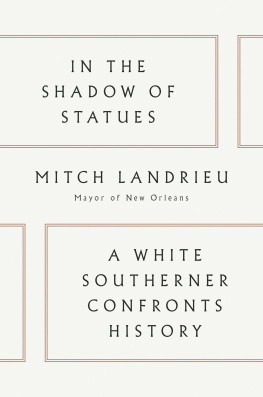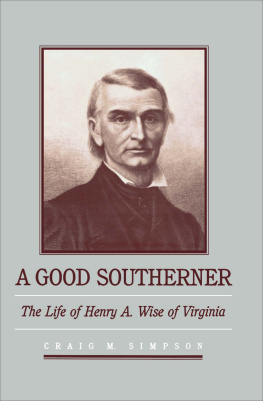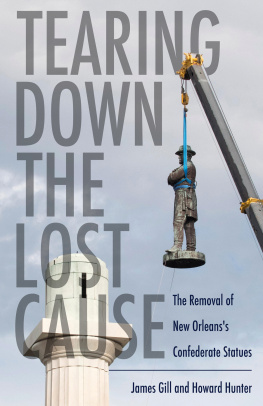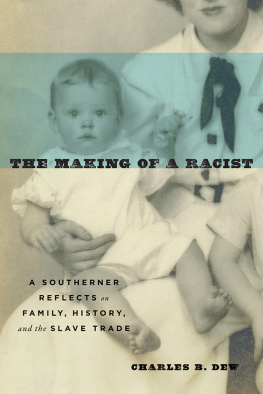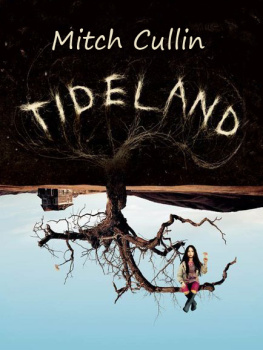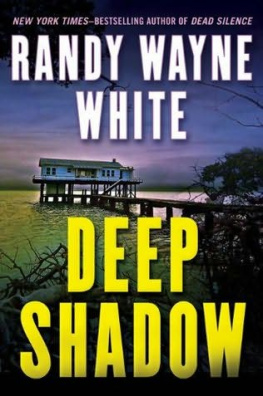Mitch Landrieu - In the Shadow of Statues: A White Southerner Confronts History
Here you can read online Mitch Landrieu - In the Shadow of Statues: A White Southerner Confronts History full text of the book (entire story) in english for free. Download pdf and epub, get meaning, cover and reviews about this ebook. year: 2018, publisher: Penguin Publishing Group, genre: Politics. Description of the work, (preface) as well as reviews are available. Best literature library LitArk.com created for fans of good reading and offers a wide selection of genres:
Romance novel
Science fiction
Adventure
Detective
Science
History
Home and family
Prose
Art
Politics
Computer
Non-fiction
Religion
Business
Children
Humor
Choose a favorite category and find really read worthwhile books. Enjoy immersion in the world of imagination, feel the emotions of the characters or learn something new for yourself, make an fascinating discovery.
- Book:In the Shadow of Statues: A White Southerner Confronts History
- Author:
- Publisher:Penguin Publishing Group
- Genre:
- Year:2018
- Rating:5 / 5
- Favourites:Add to favourites
- Your mark:
- 100
- 1
- 2
- 3
- 4
- 5
In the Shadow of Statues: A White Southerner Confronts History: summary, description and annotation
We offer to read an annotation, description, summary or preface (depends on what the author of the book "In the Shadow of Statues: A White Southerner Confronts History" wrote himself). If you haven't found the necessary information about the book — write in the comments, we will try to find it.
Mitch Landrieu: author's other books
Who wrote In the Shadow of Statues: A White Southerner Confronts History? Find out the surname, the name of the author of the book and a list of all author's works by series.
In the Shadow of Statues: A White Southerner Confronts History — read online for free the complete book (whole text) full work
Below is the text of the book, divided by pages. System saving the place of the last page read, allows you to conveniently read the book "In the Shadow of Statues: A White Southerner Confronts History" online for free, without having to search again every time where you left off. Put a bookmark, and you can go to the page where you finished reading at any time.
Font size:
Interval:
Bookmark:

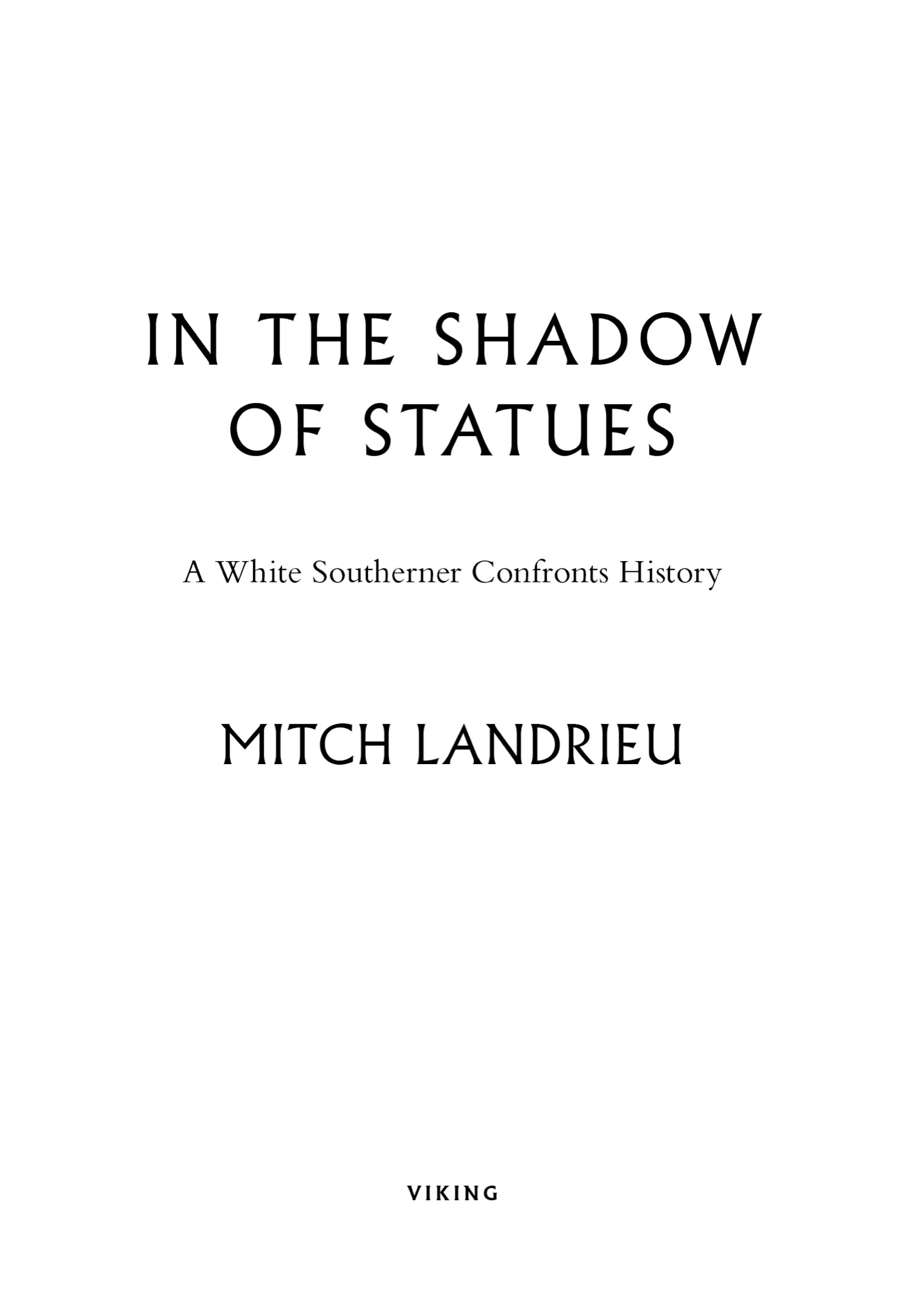
VIKING
An imprint of Penguin Random House LLC
375 Hudson Street
New York, New York 10014
penguin.com
Copyright 2018 by Mitch Landrieu
Penguin supports copyright. Copyright fuels creativity, encourages diverse voices, promotes free speech, and creates a vibrant culture. Thank you for buying an authorized edition of this book and for complying with copyright laws by not reproducing, scanning, or distributing any part of it in any form without permission. You are supporting writers and allowing Penguin to continue to publish books for every reader.
ISBN 9780525559443 (hardcover)
ISBN 9780525559450 (ebook)
Penguin is committed to publishing works of quality and integrity. In that spirit, we are proud to offer this book to our readers; however, the story, the experiences, and the words are the authors alone.
Version_1
For my incredible wife, Cheryl, and our wonderful children:
Grace, Emily, Matt, Ben, and Will
Thank you. I love you all so much.
Here I was, mayor of a major American city in the midst of a building boom like no other, filled with million-dollar construction jobs, and I couldnt find anyone in town who would rent me a crane. Are you kidding me?!
For the last eight years, wed experienced the most aggressive rebuilding phase in our citys history. Wed benefited from nearly $8 billion in public and private-sector investments, from housing to hospitals to new retail stores to streets. Wed awarded billions of dollars of construction work to private contractors to actually do the rebuilding, and there are cranes across the skyline. Many of the construction companies, large and small, have made record profits during my time in City Hall.
The people of the city of New Orleans, through their elected government, had made the decision to take down four Confederate monuments, and it wasnt sitting well with some of the powerful business interests in the state. When I put out a bid for contractors to take them down, a few responded. But they were immediately attacked on social media, got threatening calls at work and at home, and were, in general, harassed. This kind of thing normally never happens. Afraid, most naturally backed away. One contractor stayed with us. And then his car was firebombed. From that moment on, I couldnt find anyone willing to take the statues down.
I tried aggressive, personal appeals. I did whatever I could. I personally drove around the city and took pictures of the countless cranes and crane companies working on dozens of active construction projects across New Orleans. My staff called every construction company and every project foreman. We were blacklisted. Opponents sent a strong message that any company that dared step forward to help the city would pay a price economically and even personally.
Can you imagine? In the second decade of the twenty-first century, tactics as old as burning crosses or social exclusion, just dressed up a little bit, were being used to stop what was now an official act authorized by the government in the legislative, judicial, and executive branches.
This is the very definition of institutionalized racism. You may have the law on your side, but if someone else controls the money, the machines, or the hardware you need to make your new law work, you are screwed. I learned more and more that this is exactly what has happened to African Americans over the last three centuries. This is the difference between de jure and de facto discrimination in todays world. You can finally win legally, but still be completely unable to get the job done. The picture painted by African Americans of institutional racism is real and was acting itself out on the streets of New Orleans during this process in real time.
In the end, we got a crane. Even then, opponents at one point had found their way to one of our machines and poured sand in the gas tank. Other protesters flew drones at the contractors to thwart their work. But we kept plodding through. We were successful, but only because we took extraordinary security measures to safeguard equipment and workers, and we agreed to conceal their identities. It shouldnt have to be that way.
What follows is my account of the tumultuous events that led to the crisis over taking down the figures of Robert E. Lee, Jefferson Davis, and Pierre Gustave Toutant Beauregard and a monument honoring the White League, a Reconstruction-era organization of racial militants.
Learning the story of these structures, why they were built and by whom, made clear to me, probably for the first time in my life, the lens through which many, though certainly not all, Southerners have seen our regional identity since the Civil War. The statues were not honoring history, or heroes. They were created as political weapons, part of an effort to hide the truth, which is that the Confederacy was on the wrong side of humanity. They helped distort history, putting forth a myth of Southern chivalry, the gallant Lost Cause, to distract from the terror tactics that deprived African Americans of fundamental rights from the Reconstruction years through Jim Crow until the civil rights movement and the federal court decisions of the 1960s. Institutional inequities in the economic, education, criminal justice, and housing systems exist to this very day.
I am well aware of the emotional investment of many Southerners whose ancestors fought in the Civil War, of the popular interest in historical events, of how families lost loved ones, came through, and coped. I do not mean dishonor to these people. My concern is with the political meaning of the monuments in New Orleans, who put them there, and why: the perversion of history.
The statues were symbols. Symbols matter. We use them in telling the stories of our past and who we are, and we choose them carefully. Once I learned the real history of these statues, I knew there was only one path forward, and that meant making straight what was crooked, making right what was wrong. It starts with telling the truth about the past.
Racethe word, its many meanings, the constellation of issues that the word connotesdoes something to the human eye. Sometimes, its hot and uncomfortable when you are around people who can only see color. People of color become objects, or problems, not humans. Its often these same people who, when asked about history, insist to themselves and us that they are not at fault, that history happened before them, that its time to move onin fact, it was all so far back it might as well never have happened. Or they grasp one convenient piece of history, say, the rightful place of Confederate statues, a reminder of why Southern soldiers fought and died. But that is not the whole story of what these statues mean and why they were erected.
And the misuse of history is inflamed by the anger burning through demonstrations today, anger fueled by white supremacists and neo-Nazis who have stolen the meaning of Southern heritage from many whites who abhor their ideology but still hold hard to a rose-colored nostalgia for the past. It is a view of history that I, respectfully, do not share; but I understand where they are coming from, and why many people feel as they do. Faulkner famously wrote, The past is never dead; its not even past. We live those words today, all too painfully.
Race is Americas most traumatic issue, one that we have not nearly worked through. The true measure of a great country is the quality of justice it affords to all. Dr. Martin Luther King, Jr., insisted, True peace... is the presence of justice. It is a long, rugged road for all people to find that peace, and our job is to stay on that path, even as we make progress.
Font size:
Interval:
Bookmark:
Similar books «In the Shadow of Statues: A White Southerner Confronts History»
Look at similar books to In the Shadow of Statues: A White Southerner Confronts History. We have selected literature similar in name and meaning in the hope of providing readers with more options to find new, interesting, not yet read works.
Discussion, reviews of the book In the Shadow of Statues: A White Southerner Confronts History and just readers' own opinions. Leave your comments, write what you think about the work, its meaning or the main characters. Specify what exactly you liked and what you didn't like, and why you think so.

